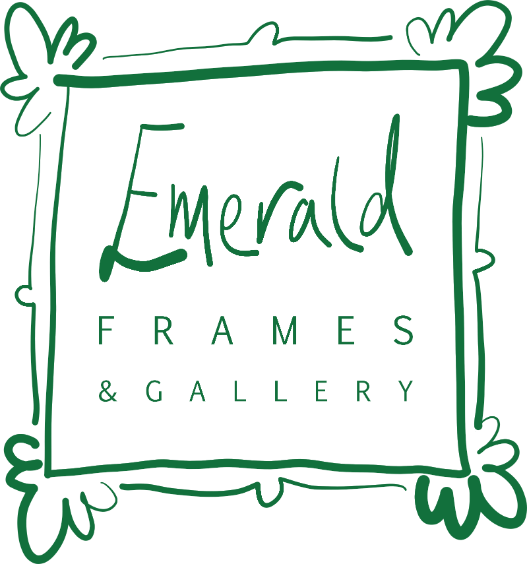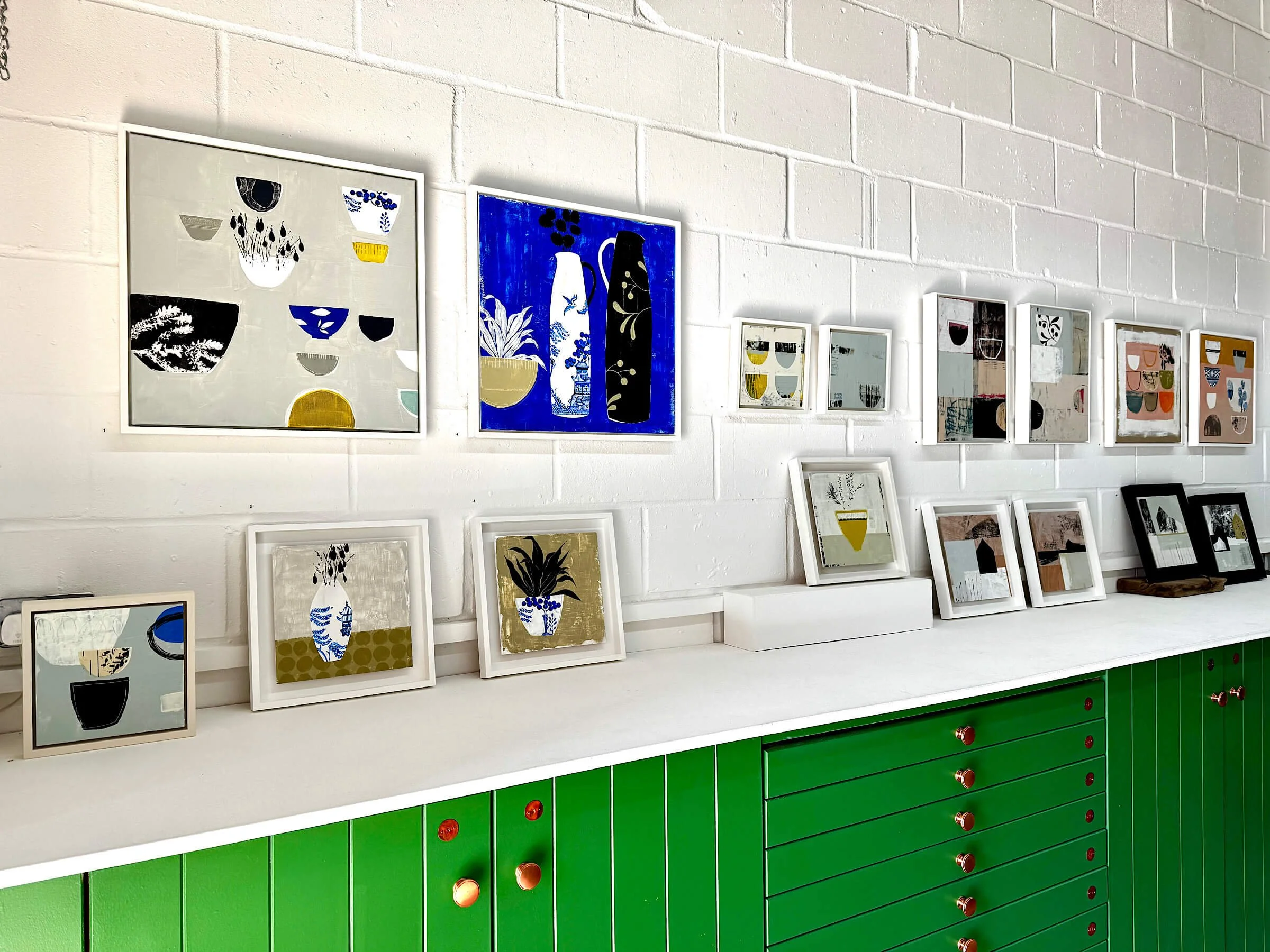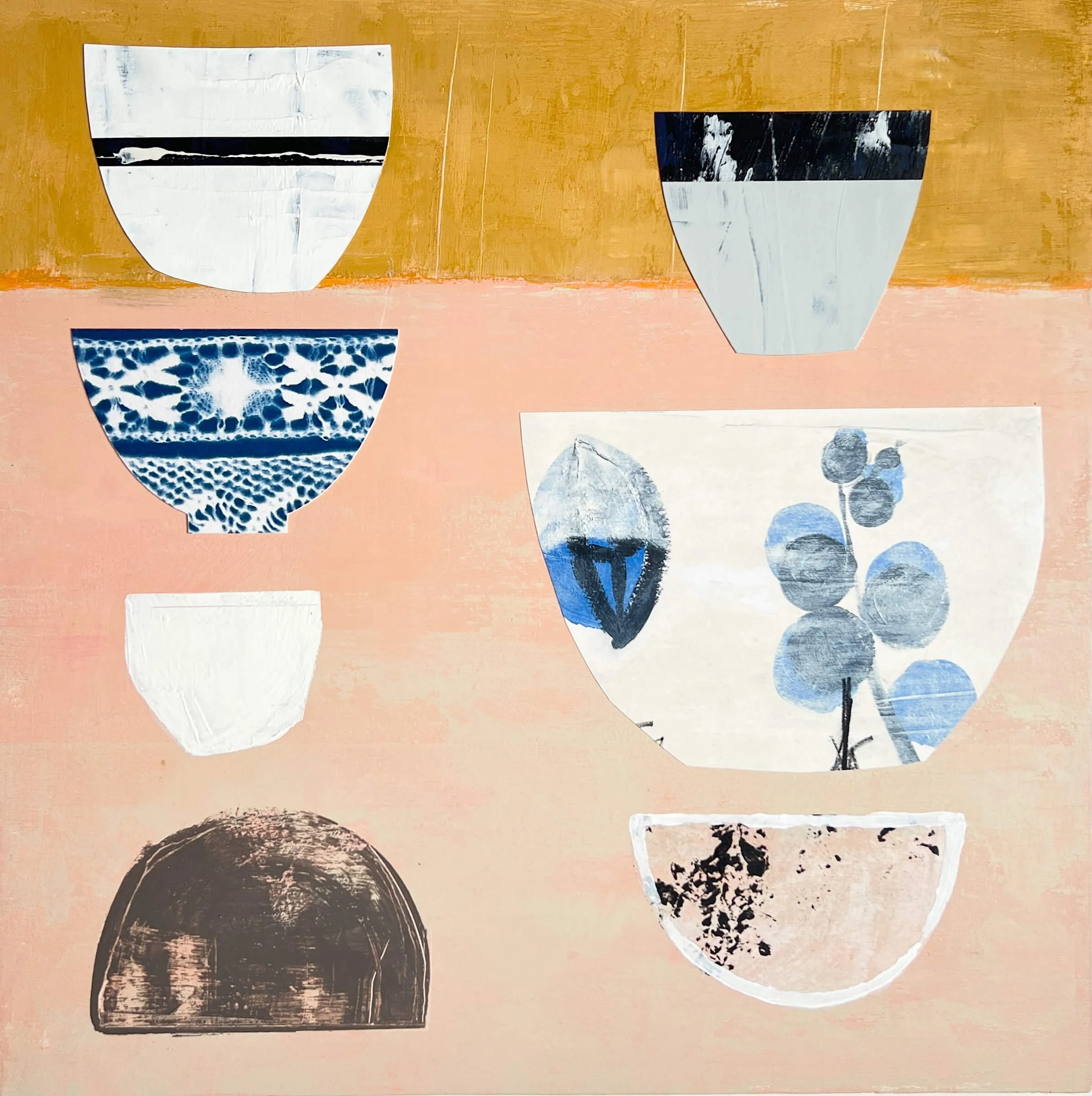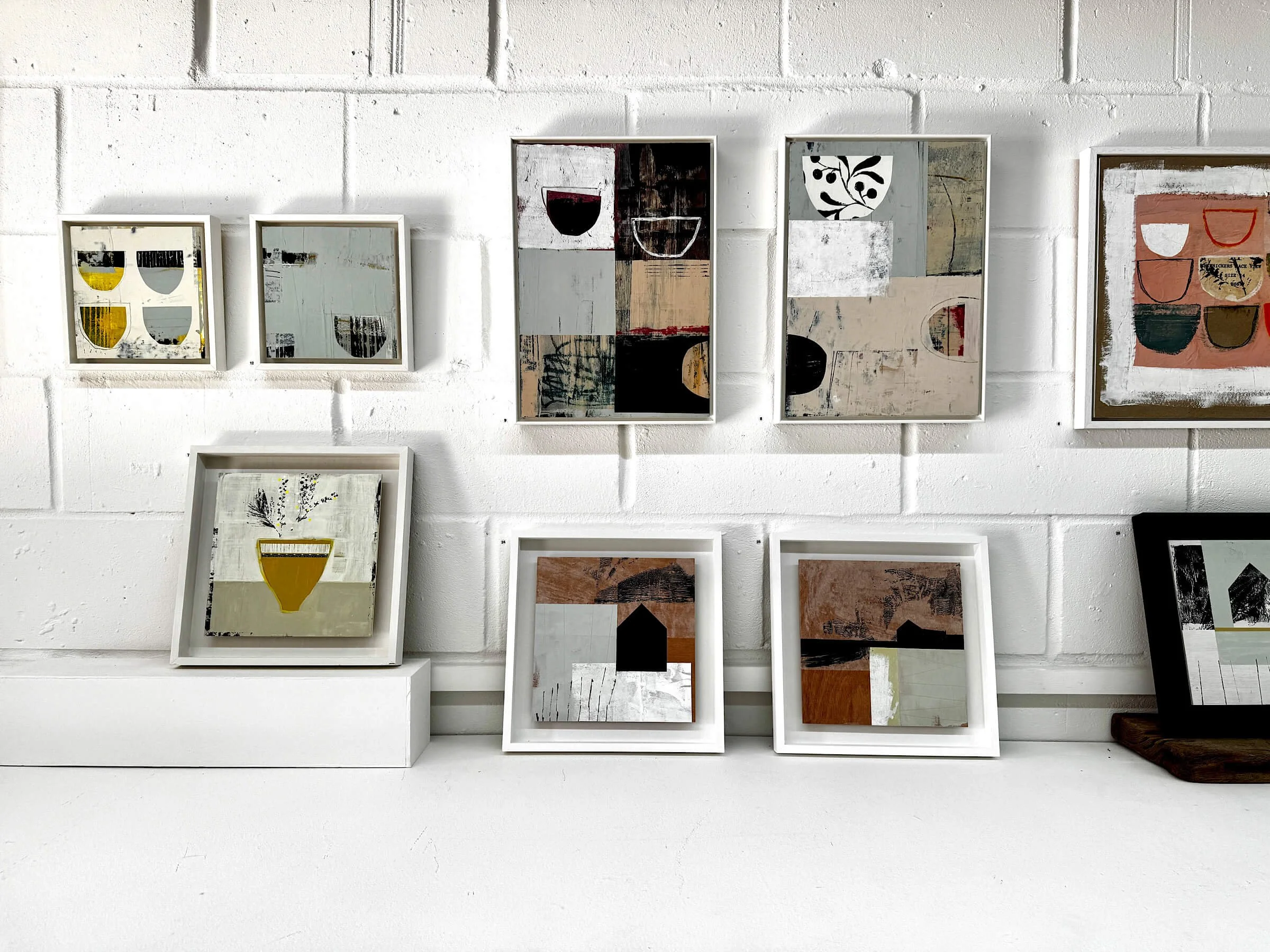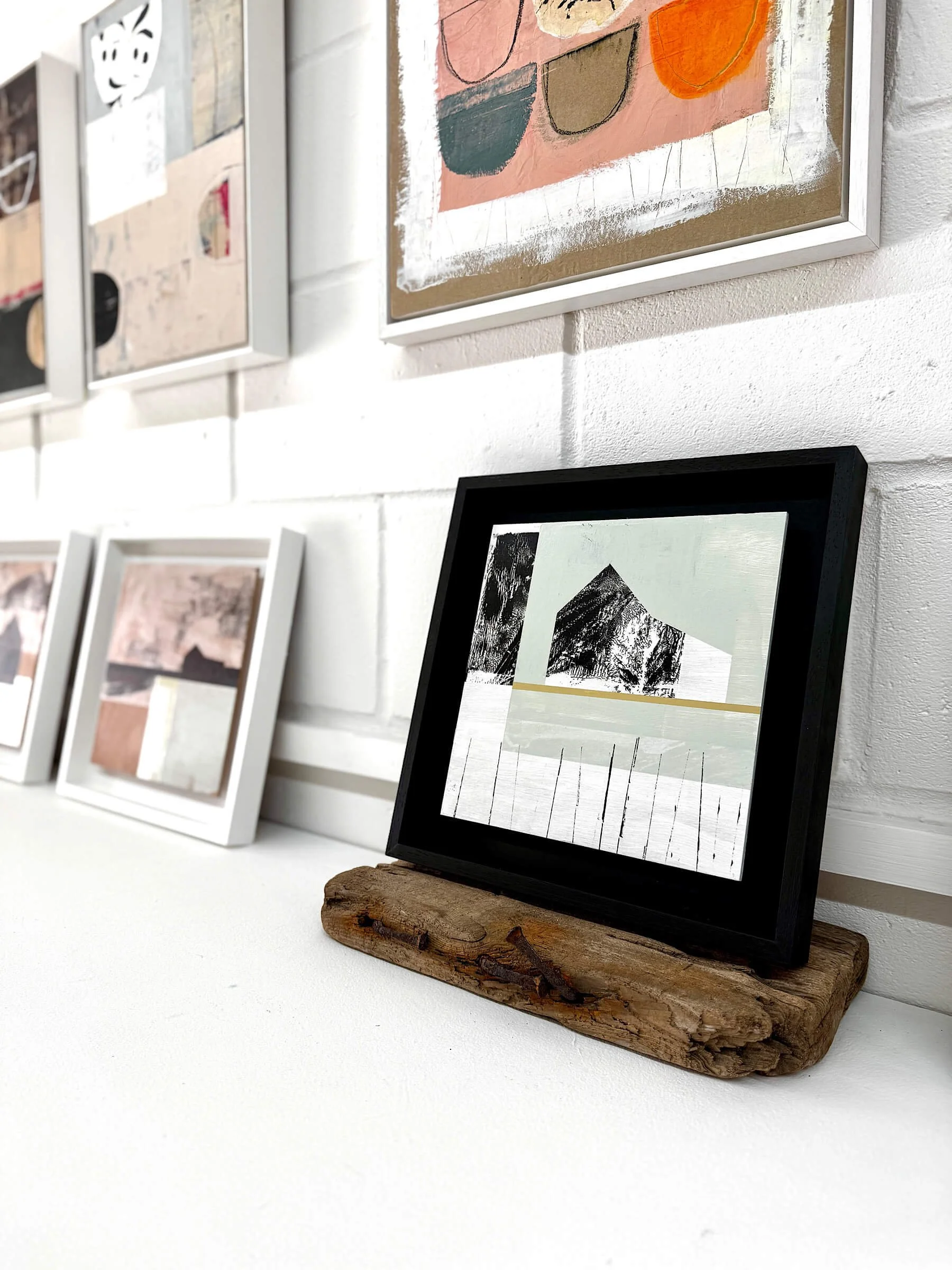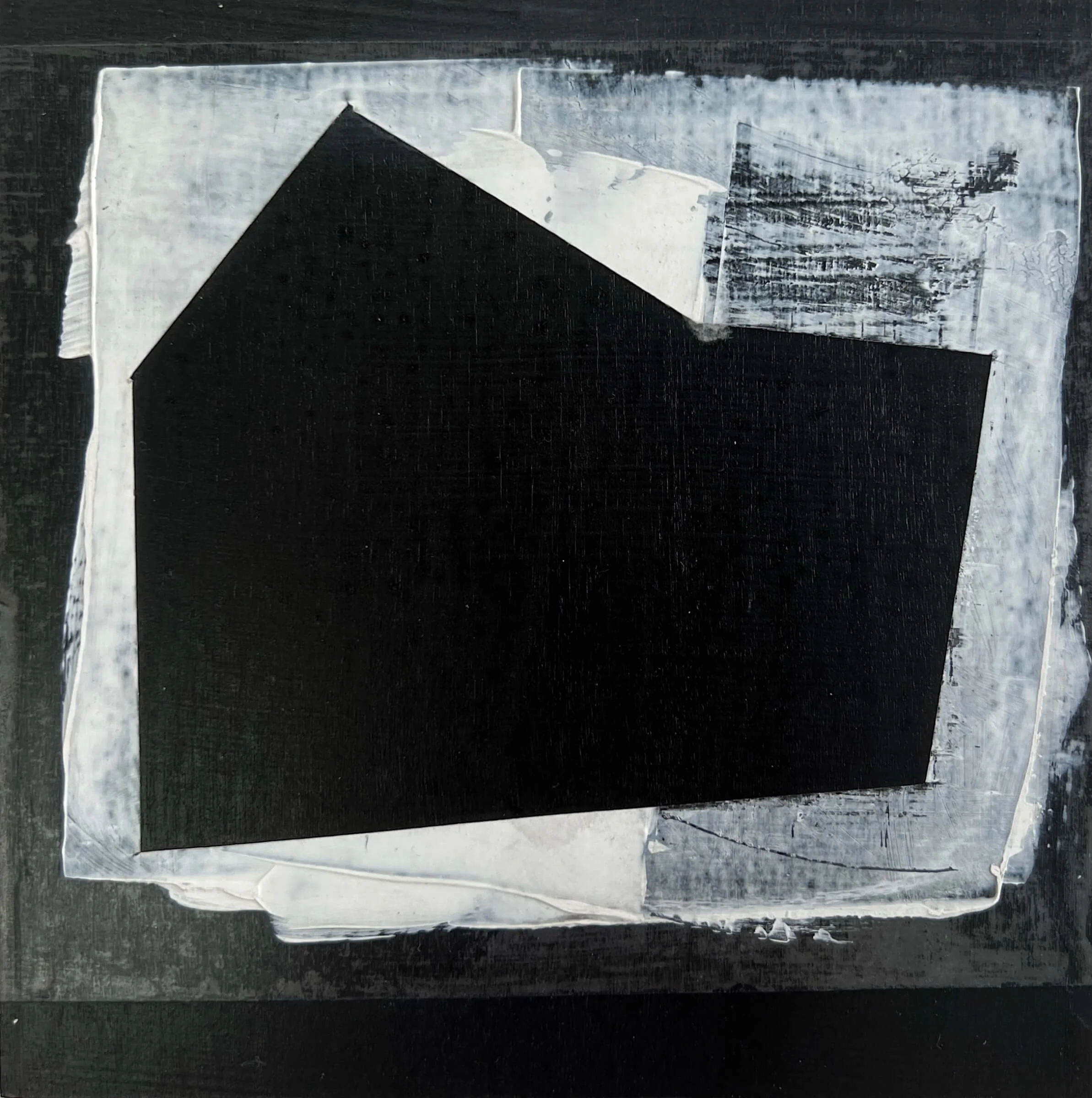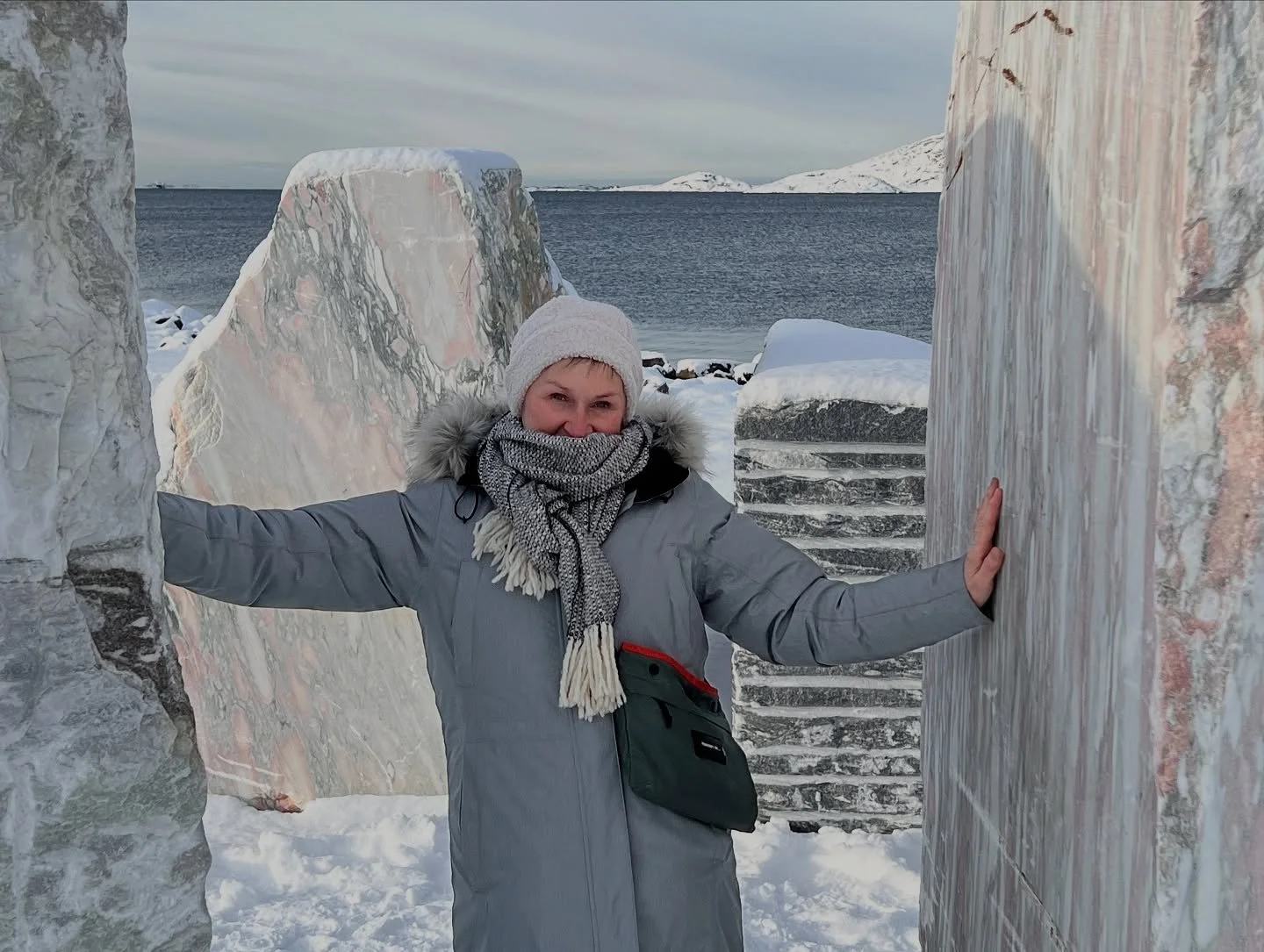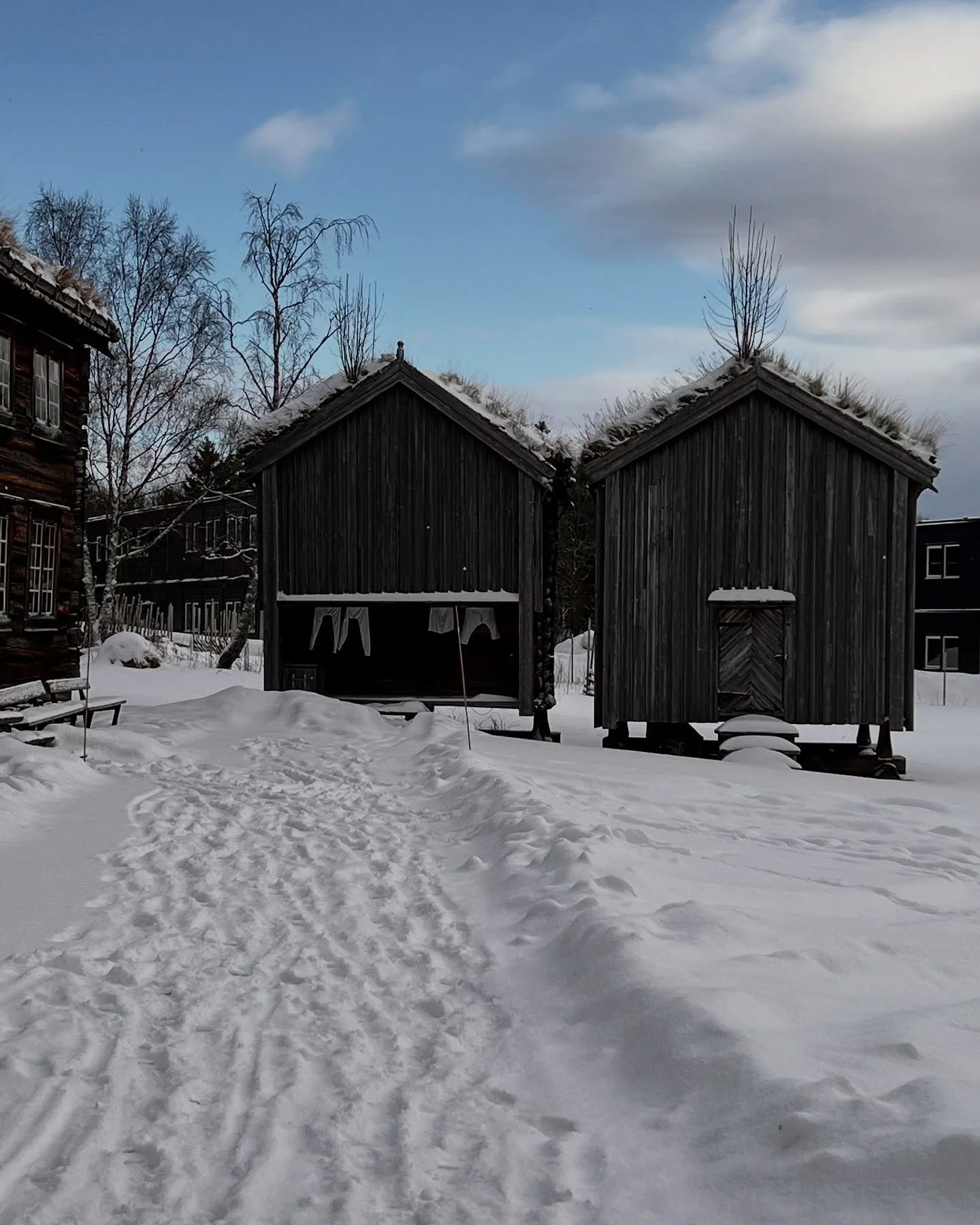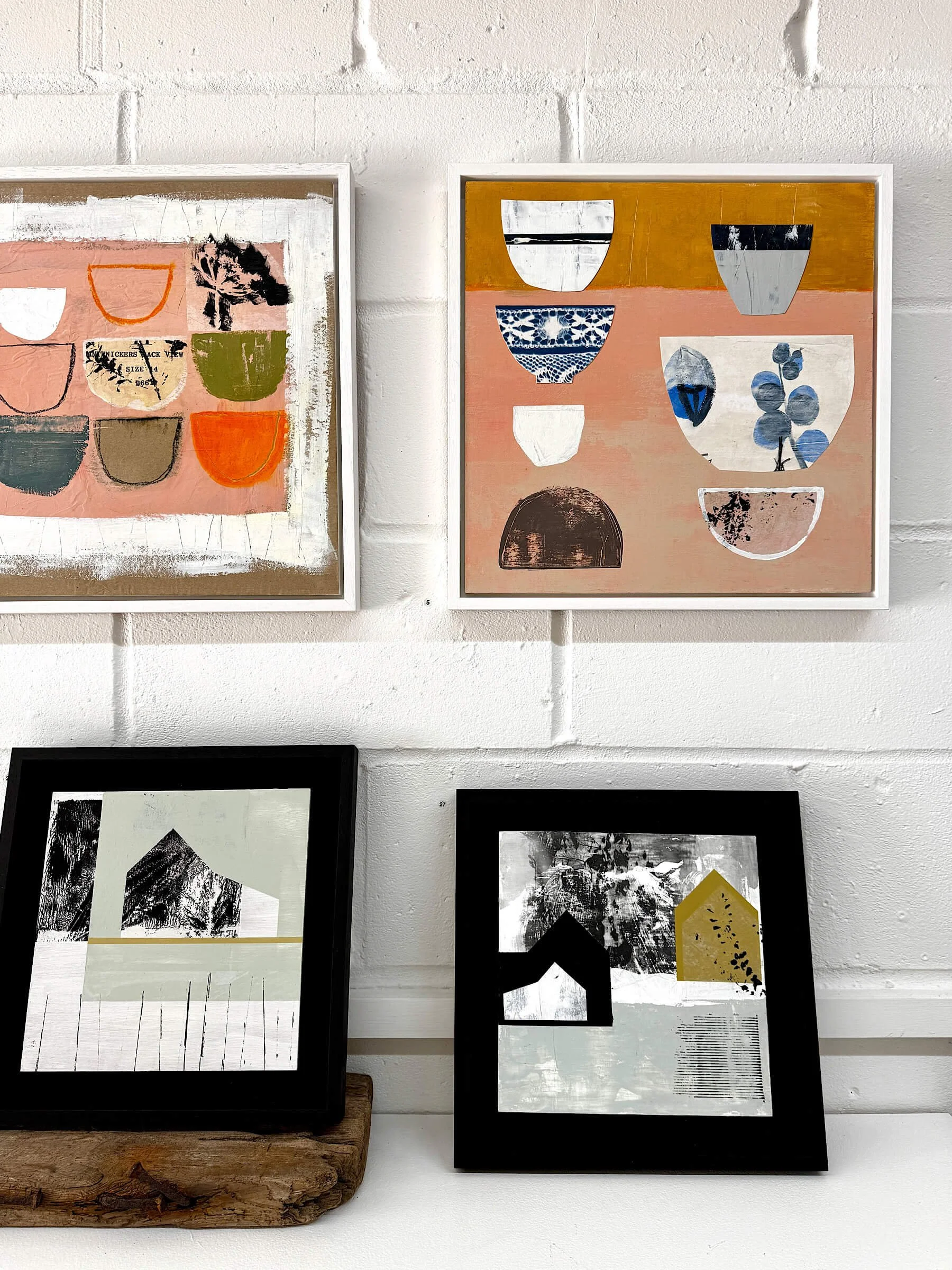In conversation with Gill Edwards
Its Still Me - A solo exhibtion by Gill Edwards at Emerald Gallery - May 2025.
Grab a cup of tea (maybe a biscuit too) and a comfy chair - Take a moment to delve into the artistic world of Gill Edwards, a painter with a rich background and inspiring career. This interview offers a fascinating glimpse into her creative processes, art practices, and the journey her exquisite pieces take as they find their way to art buyers.
Gill in her studio.
· What motivated you to become an artist?
I’ve been an artist all my life, as a child I loved drawing, especially fashion drawing and always enjoyed making patterns of any kind – Spirograph, moving around wooden mosaic shapes etc. What motivated me to start my second career as an artist was a breast cancer diagnosis in 2017. After 9 months of treatment I went back to my job and decided it was time to become the artist I’d always wanted to be.
· What is your artistic background and training?
I did a Foundation Course at Manchester and then a BA Hons in Textile Design (printed textiles) at Loughborough School of Art. After graduating I started work as a textile designer at Laura Ashley, my first job there was to work with Laura (always Mrs Ashley to staff) on a project to rework all the original fabrics from Charleston Farmhouse before it reopened – I had the original fabrics by Vanessa Bell, Duncan Grant etc in my hands. Following a long career there, where I designed everything from wrapping paper to fireplaces alongside fabrics for interiors and fashion and wallpapers, I then moved my family from Wales to Nottinghamshire to join the Romo Group. I was involved in designing, colouring & overseeing production of their luxury fabrics and wallcoverings. This role involved lots of overseas travel, including some time spent overseeing printing in Europe & Thailand. I was the Print Design Manager for two of the Romo Group brands when I left in 2019. I then took Nicholas Wilton’s 12 week Creative Visionary Program course which encouraged me to boldly rent a studio a week after I finished at Romo and to believe that I could be a painter.
· How do you approach the creative process?
My textiles background means that I usually start with mood boards. I create mood boards for both colour palette ideas and for inspiration, often using my own images that I take when travelling or from everyday moments that catch my eye. Putting together colour combinations to suggest a colour palette is something I particularly love doing and I usually try to create several different colour palettes before starting a new body of work. It’s likely that I’ll also have several inspiration mood boards and these will hang in my studio to constantly be in my sight.
Starting paintings can take different paths, sometimes I’ll create layers of colour using paint, pencils, charcoal, printed papers etc and layer them without too much thought using scrapers, squeegees and plasterer’s trowels. This creates a base for me to then react to, often masking areas and creating negative shapes. This approach explores the freedom of making marks and finding unexpected windows of joy!
Alternatively, I might have a composition in my mind, and I will keep that as a loose idea, working towards it but never being too fixed as I enjoy the spontaneous happenings along the way.
‘It’s Still Me” by Gill Edwards
· What role does inspiration play in your work?
Everything, and I see inspiration in the smallest moments of my day along with finding inspiration in travel. That moment when I spot something which lights me up inside is inspiration and having my phone camera always with me means I can capture that moment. I’m still being inspired by photos I took several years ago alongside something I might have noticed on a shelf at home. Ceramics, painted buildings, peeling paint, my roll of range tape sitting next to my cobalt blue journal all feed me!
· What mediums do you prefer to work with, and why?
Acrylic is my paint choice, for all the properties it has of fast drying and allowing layering and scratching through and it’s versatility when used with mediums. Printing my own wet strength tissue papers is both a fun process and vital to give me a different look to one I might make in paint – I enjoy the crisp mark of a printed leaf against the loose, uncontrolled marks of paint put on with a scraper. Sometimes I need to feel the freedom of charcoal or a Stabilo Woody, using my entire arm and sometimes I need the precision of a shape cut out and used as a mask.
· Can you describe your artistic style?
Difficult as I know my ‘style’ is recognisable but to me everything I make is STILL ME! I really love the difference between areas of detail and blocks of colour, areas of texture and carefully drawn shapes. Bold and subtle colours in one painting. Seemingly simple but often more complex in composition.
· Do you have any rituals or routines that help you get into a creative mindset?
A tidy studio space is necessary before I start, tidying is not just the act of moving things into place but it’s also a way of clearing my mind to allow me to focus. I also need to wear leggings and a t shirt with my St Ives School of Painting apron, which is caked in years of paint. Finally I have a cup of green tea in a Nicola Gillis mug.
· How do you balance personal expression and commercial viability in your art?
My paintings come from me, from what is catching my eye right now. I don’t think about the commercial viability when I’m painting as that would either stunt my creativity or lead to me making poorer versions of a painting that has sold. When I started painting, I had no expectations that my work would sell. I first sold to family, then friends, then to strangers and it means the world when someone connects with what I’ve created — every sale feels special. I think the freedom to explore different subjects (still life, Nordic landscape, abstracts) remains important to me and again, is probably a result of having to be constantly coming up with fresh ideas as a commercial designer.
· Who are your biggest artistic influences?
Mary Fedden, Elizabeth Blackadder (who I had the joy of meeting a few years before her death), William Scott, Lucy Rie, Japanese ceramicists and printmakers, Lucienne Day….
· What themes or subjects do you often explore in your artwork?
Still lifes, ceramic shapes and decoration techniques and patterns, the beauty of everyday objects, botanicals, repeating pattern, spaciousness, flattened silhouettes, negative shape, the simplicity of Nordic landscapes where snow covers land making shapes stand out.
· How do you know when a piece is finished?
Sometimes it just feels finished and I don’t feel the need to add more but often I leave paintings after getting to the ‘almost finished’ stage, come back to them after a few days or even weeks/months and I usually know then if it isn’t finished. I think experience probably comes into play. I will view a painting through my camera lens, desaturate it and see how it makes me feel…if there’s a niggle that something’s not right then it isn’t finished and I will try options before I commit.
· Do you have a favourite piece of artwork that you’ve created? If so, why is it your favourite?
Over the last few years, since I started painting, I’ve often had a favourite, sometimes because it has surprised me as it emerges, sometimes because I’ve tried a new technique or scale. I often find my favourites don’t sell immediately but do sell in time, it makes me feel as if they want to stay with me a bit longer so I can enjoy them before they find their homes!
· How do you market and promote your artwork?
Through my website, Instagram and I am a gallery artist at The Point Contemporary, Cromer and often exhibit at the Tarpey Gallery, Castle Donington. I also curate my own exhibitions, sometimes solo but often with artist friends in Aldeburgh and Stamford. I send a newsy email out every month to subscribers and I’m building my mailing list as that’s somewhere I enjoy chatting to followers and it isn’t subject to any algorithm beyond my control!
· Can you share any memorable experiences or stories related to your art?
Here are two of many lovely stories about paintings finding their owners!
I recently sold one of my biggest paintings to a buyer who had first seen it on IG last year when it was in a gallery show. The buyer contacted me to tell me she had fallen in love with the painting but as it was above her price range she couldn’t buy it, but she did buy several small postcard size paintings, A month later she bought another postcard size painting. Over the last few months, she messaged me on IG telling me that she couldn’t forget the big painting. One morning on a very rainy day in January this year she messaged to say she was gazing at the painting on my website to brighten up her day! Fast forward to last month and it was a milestone birthday…she treated herself to the painting and now it’s hers to look at every day!
And then there is story about a small painting…
…called A Bowl for Lucie which was at the Point Gallery, Cromer. The painting had emerged after I saw a Lucy Rie exhibition at Kettles Yard. This was what Lucy told me after buying the painting –
“My name is Lucy and I recently turned 60. I don’t make much of my own birthday, but this year felt different; I needed to mark the next part of my life. And then I spotted it- ‘A Bowl for Lucie’. Today I bought it and it’s now hanging on my wall. I still look at this and can’t believe she’s mine!”
· What do you hope viewers take away from your artwork?
I create art that invites the viewer to slow down, contemplate and feel joy.
With thanks to Gill for chatting to us for this feature.
Follow Gill on instagram ⬇️
